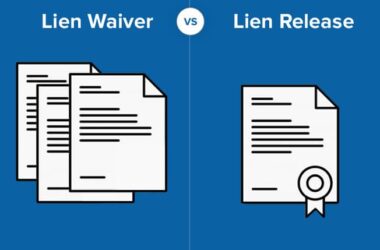Feeling Financial Pressure? You’re Not Alone.
If you’re feeling stressed about your Personal Finance, guess what? You’re in good company. Around 70% of Millennials and Gen Z experience financial stress every day. It’s not just you! Whether it’s that nagging student loan debt, trying to save for a first home, or simply getting through the month without dipping into savings, finances can feel like a heavy burden. But here’s the good news: managing your money doesn’t have to be stressful or overwhelming.
In this guide, we’re going to break it all down—step by step. Whether you’re new to personal finance or just need a refresh, we’ll cover everything from budgeting to investing. Think of it like a friendly conversation with a friend who’s been there and figured out some solutions.

What Exactly is Personal Finance?
It’s More Than Just Making Ends Meet
At its core, personal finance is how you manage your money—earning, saving, spending, and investing. For Millennials and Gen Z, though, it also means dealing with challenges that previous generations didn’t face as much. Rising costs, gig economy jobs with inconsistent pay, and those infamous student loans all play a big part.
But personal finance is about more than just covering your bills. It’s about creating the life you want, with less financial stress. Think of it as building a foundation for your future—one where money works for you, not against you.
Why It’s Crucial to Start Early
The sooner you take control of your finances, the better. Here’s a staggering fact: only 39% of Americans can cover a $1,000 emergency expense without borrowing. It’s time to change that narrative. When you get a handle on personal finance early on, you’ll be better prepared to weather life’s inevitable financial storms
Building a Financially Secure Future

1. Budgeting: Your Financial Map
Why Budgeting is Your Best Friend
We get it “budget” sounds like a boring word. But hear us out. A budget is basically a map that tells your money where to go. Without it, you’ll find yourself constantly wondering where all your hard-earned cash went by the end of the month.
How to Create a Budget That Works for You:
- Track Everything: Start by getting a clear view of what’s coming in and going out. Apps like Mint or YNAB make this super easy.
- The 50/30/20 Rule: A simple formula to start: 50% of your income goes to needs (rent, groceries), 30% to wants (dining out, entertainment), and 20% to savings and debt repayment.
- Make it Flexible: Life changes, and so should your budget. Adjust it as needed when your income changes or unexpected expenses pop up.
Pro Tip: Automate your savings and bill payments so you don’t have to think about it. Let technology handle the boring stuff!
2. Debt: It Doesn’t Have to Be a Monster

Facing the Debt Dilemma
Student loans, credit card balances—these debts can feel like they’re weighing you down. Trust us, you’re not alone in this struggle. The average Millennial or Gen Zer graduates with over $30,000 in student debt. But the key here is: you can manage it. It just takes a strategy.
Three Ways to Tackle Debt:
- Avalanche Method: Focus on paying off the debt with the highest interest rate first. You’ll save the most money over time this way.
- Snowball Method: If you need a little psychological boost, pay off your smallest debts first. That momentum will keep you motivated.
- Consolidation: Simplify your life by combining multiple debts into one lower-interest loan. This can make repayment more manageable and cheaper.
Pro Tip: If student loans are a big concern, look into refinancing. It could lower your interest rate and save you tons in the long run.
3. Saving for the Future: Why Your Future Self Will Thank You

Build an Emergency Fund
An emergency fund is your financial safety net. If your car breaks down or you face unexpected medical bills, this fund will save you from having to rely on credit cards or loans. Aim for 3-6 months of living expenses in a high-yield savings account. Start small, but aim big.
Retirement May Seem Far Away, But…
It may seem like retirement is a distant dream, but the sooner you start, the easier it will be to retire comfortably. Time is your best friend thanks to the magic of compound interest.
Two Key Retirement Tools:
- 401(k): If your employer offers a match, contribute at least enough to get the full match—it’s free money!
- IRA: For even more flexibility, open an IRA and start saving for your golden years.
Pro Tip: Automate contributions to both your emergency fund and retirement account. Make saving as effortless as possible.
4. Investing: Grow Your Wealth Over Time

Why Investing Isn’t Just for the Rich
You might think investing is only for people with tons of money. But starting small can make a huge difference in the long run. Plus, there are easy ways to get started with as little as a few dollars.
Best Investment Options for Beginners:
- Index Funds & ETFs: These are low-cost, diversified investments that are perfect if you want something simple.
- Robo-Advisors: Platforms like Betterment or Wealthfront make investing as easy as setting up a Netflix account. They do the heavy lifting for you.
- Cryptocurrency: If you’re feeling adventurous, crypto can be an option. Just know—it’s risky. Don’t put all your eggs in one basket here.
Pro Tip: The best strategy for investing? Be consistent. Don’t try to time the market—focus on long-term growth.
5. Financial Literacy: The Key to Mastery
Know Your Financial Products
It’s not enough to just save and invest. You need to understand the financial tools you’re using. Learning how credit scores work, choosing the right insurance, and understanding your tax obligations are all essential parts of financial success.
Resources to Boost Your Knowledge:
- Books: Check out “Rich Dad Poor Dad” by Robert Kiyosaki or “The Total Money Makeover” by Dave Ramsey.
- Podcasts: Listen to “The BiggerPockets Money Podcast” for actionable advice.
- Online Courses: Sites like Coursera and Udemy offer courses on personal finance that can help you dive deeper.
Pro Tip: Set aside a few hours each month to learn more about personal finance. The more you know, the better your decisions will be.
Real-Life Case Studies
Sarah’s Journey to Debt Freedom: How She Paid Off $40,000 in Two Years
Sarah Thompson’s story isn’t just about numbers and payments—it’s about determination, sacrifice, and sheer grit. When Sarah graduated college with a psychology degree, she also graduated with $40,000 in student loan debt. That’s the kind of number that can weigh on you, like a heavy cloud always hanging over your head. It wasn’t just a looming number on paper—it was something that would affect every decision she made for the foreseeable future. But Sarah wasn’t about to let that debt define her. She had a plan.
Facing the Numbers Head-On
The first time Sarah sat down to really look at her finances, she felt that familiar pit in her stomach. She didn’t know how she was going to juggle rent, groceries, and those seemingly never-ending student loan payments on her modest entry-level salary. It was overwhelming. But instead of letting that panic paralyze her, Sarah decided to face her debt head-on. She read everything she could about managing debt and stumbled upon the snowball method.
The idea of the snowball method clicked with her. It was simple but powerful—focus on paying off the smallest debt first to gain momentum and confidence, then move on to the larger ones. For Sarah, it wasn’t just about money—it was about building a sense of accomplishment with each loan she paid off.
Living Lean and Sacrificing for a Goal
Sarah realized that to get rid of her debt quickly, she needed to make some tough choices. She cut out nearly every unnecessary expense in her life. No more streaming services, no more fancy coffees, no more take-out dinners. Instead, she started meal prepping on Sundays, batch cooking affordable meals to get her through the week. She also sold off some of her extra clothes, old electronics, and anything she didn’t absolutely need. Every single dollar saved went toward her debt.
But the biggest and toughest decision? Sarah moved back in with her parents. It wasn’t easy, and it wasn’t glamorous, but it cut her living expenses dramatically. Rent alone would have cost her over $1,000 a month, and with that money going straight to her loans, she was shaving years off her debt timeline.
Side Hustle: From Passion to Profit
Even with her frugal lifestyle, Sarah knew that she needed to make more money if she was going to pay off her loans quickly. So she turned a hobby into a side hustle. Sarah had always loved graphic design, so she brushed up on her skills and started taking freelance gigs on platforms like Fiverr and Upwork.
At first, the jobs were small, but within a few months, Sarah was pulling in an extra $1,500 a month from her freelance work. Every penny of it went straight toward her debt. It wasn’t easy juggling her full-time job with freelancing meant long nights and weekends. But Sarah had a clear vision of her debt-free future, and she knew it would be worth it.
The Sweet Taste of Debt Freedom
After two years of dedication, frugal living, and hustling, Sarah made her final student loan payment. When she clicked “submit” on that last payment, she felt a sense of freedom and relief she hadn’t experienced since graduation. It wasn’t just about the money—it was about reclaiming control over her future. She had made sacrifices, sure, but those sacrifices gave her the financial freedom she longed for.
Today, Sarah uses her experience to help others tackle their debt. She became a financial coach, sharing the lessons she learned along the way with others who feel overwhelmed by their student loans. For Sarah, paying off her debt wasn’t just about the numbers—it was about empowering herself and now, others.
John’s Investment Success: How Consistency Built a $100,000 Portfolio by Age 30
John Martin was the kind of guy who always kept one eye on the future, but when it came to money, the future felt like a distant thought. He didn’t come from a family of investors, and the idea of retirement seemed like something for people much older. But after some nudging from friends and a bit of self-education, John started to realize that the earlier he started investing, the bigger the payoff would be down the road. So, at 23, he took the plunge.
Starting Small, But Starting Early
John’s first investment wasn’t a grand one. In fact, it was pretty modest. Fresh out of college with a marketing degree, he was living paycheck to paycheck like most of his peers. But he knew the key was to start somewhere, so he opened a Roth IRA with just $500 he had managed to save from his first few months of work. He also started contributing to his company’s 401(k) to take advantage of the employer match, which felt like free money he couldn’t pass up.
He didn’t know everything about investing, but he did know one thing—he wasn’t going to get caught up in the frenzy of chasing high returns or trying to outsmart the market. Instead, John chose low-cost index funds, the kind that track the overall market, offering diversification and steady returns over time. He wasn’t in it for the short term; this was about building something that would grow with him.
Consistency Over Flashy Wins
John’s secret wasn’t glamorous or complicated. It was patience and consistency. Every month, without fail, he contributed a portion of his paycheck to his 401(k) and his Roth IRA. Some months, he could only afford a little, but he didn’t let that discourage him. He set up automatic contributions, so the money went into his investments before he even saw it in his checking account.
He wasn’t making big, flashy investments or taking wild risks. Instead, he focused on putting his money to work in low-cost index funds that slowly but steadily grew. For John, the stock market’s ups and downs didn’t faze him. He wasn’t worried about daily fluctuations because he understood that it was the long-term game that mattered.
Watching Compound Interest Work Its Magic
By the time John hit his late twenties, his consistency was paying off—literally. The growth wasn’t just coming from his contributions anymore; his investments were growing on their own, thanks to the magic of compound interest. It was like watching a snowball roll down a hill, getting bigger and bigger with each pass.
At 27, his portfolio had grown to around $50,000, and John started to feel the real power of what he was building. He kept investing the same way he had been all along—regular contributions, steady growth. His secret wasn’t timing the market or jumping into risky investments. It was trusting the process and letting time do the heavy lifting.
Hitting the $100,000 Mark by 30
On his 30th birthday, John checked his portfolio and saw a number he hadn’t even imagined when he started: $100,000. It wasn’t magic or luck that got him there—it was years of consistent investing, taking advantage of his employer’s 401(k) match, and letting compound interest work in his favor.
John’s story isn’t about getting rich quickly. It’s about the power of starting early, sticking with a simple strategy, and trusting that the long-term gains will come. Today, John is still investing, still playing the long game, and now working toward financial independence. His advice to anyone starting out? “Start now, no matter how small, and keep going. The future you will thank you.”
Practical Tips, Tools, and Personal Guidance
Hey, I get it—sometimes the hardest part about managing your finances is knowing where to start. That’s why I’m not just going to throw a bunch of apps and tools at you. I’ll share with you my own personal spreadsheet, the same one that’s helped me track every penny, organize my budget, and even figure out where I can save more. You’ll also get a list of the tools I use daily, so you won’t feel lost trying to pick the right one. Ready? Let’s dive in.
Budgeting & Saving Apps: Tools That Will Keep You on Track
Mint:
This one’s a lifesaver if you’re just getting started. It’s completely free, and it syncs with your bank accounts to automatically track your expenses. I’ve been using Mint for years, and it’s a no-brainer when it comes to knowing where your money is going. Want to track how much you’re spending on takeout every month? Mint will show you—sometimes too clearly!
YNAB (You Need A Budget):
If you want more control and you’re ready to get really serious about budgeting, YNAB is a fantastic choice. Yes, it’s a paid app, but I can tell you from experience that it’s worth every penny. You get to assign every dollar a job, which means no more wondering where your money went. It helps you plan for the future, not just react to it. I can share with you how I use YNAB to manage my side hustle income and day-to-day expenses—it’s been a game changer.
Investment Platforms: Easy Ways to Start Growing Your Money
Betterment:
Okay, let’s talk investing. If you’re like I was when I first started, the stock market can feel overwhelming. That’s where Betterment comes in. It’s a robo-advisor, which means it automatically manages your investments for you based on your goals and risk tolerance. You don’t need to be an expert—Betterment takes the guesswork out of it. I’ll even share the exact strategy I use with Betterment to make sure my money is working hard for me while I sleep.
Vanguard:
Want to take a more hands-on approach? Vanguard offers low-cost index funds and ETFs that are perfect for beginners. It’s where I started my Roth IRA, and I can’t recommend it enough. Their fees are super low, which means more of your money stays invested and grows over time. I’ll show you how to set up an account and start building your long-term portfolio.
Success Habits to Adopt: Simple Routines That Will Change Your Financial Life
Automate Everything:
I can’t stress this enough—automation is your best friend. Set up automatic transfers for your savings, retirement accounts, and even bill payments. It’s the easiest way to ensure you’re consistently saving and staying on top of your finances without having to think about it. I’ll share my own automation routine with you, so you can see how easy it is to set up.
Review Regularly:
Once a month, I sit down with a cup of coffee and review my finances. It’s not just about checking my accounts—it’s about adjusting my budget, seeing if I can save more, and making sure my investments are on track. I call it my “money date,” and honestly, it’s one of the best habits I’ve ever picked up. I’ll show you my process and how to make it a regular part of your life too.
Keep Learning:
I didn’t get where I am overnight, and the truth is, I’m still learning. The more you understand about personal finance, the better your decisions will be. That’s why I’m always reading books, listening to podcasts, and taking courses. I’ll share my favorite resources with you, so you can keep growing your financial knowledge too.
I’m not just throwing out generic advice here—I want to help you build something real, something you can use in your day-to-day life. When we’re done, you won’t just have a plan—you’ll have the tools, the mindset, and the confidence to take control of your financial future. And don’t worry, I’ll be here to guide you every step of the way.
Take Charge of Your Financial Future
You don’t need to feel overwhelmed by your finances. By taking small, consistent steps like budgeting, paying off debt, and investing, you can set yourself up for long-term success. Ready to dive deeper? Explore our related articles on investing, managing student loans, and starting a side hustle. And don’t forget to subscribe to our newsletter for more actionable tips on taking control of your financial life.






